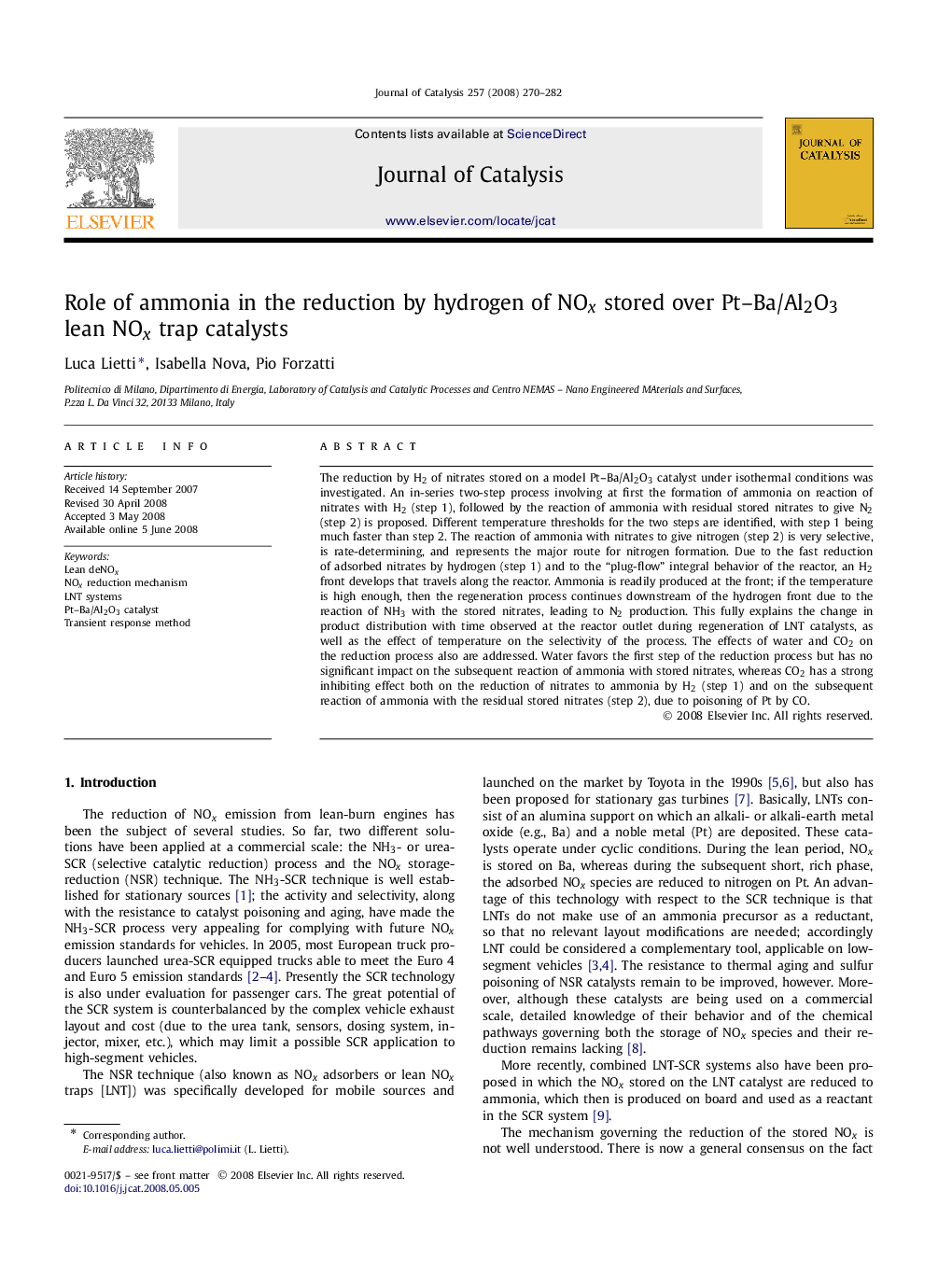| Article ID | Journal | Published Year | Pages | File Type |
|---|---|---|---|---|
| 62611 | Journal of Catalysis | 2008 | 13 Pages |
The reduction by H2 of nitrates stored on a model Pt–Ba/Al2O3 catalyst under isothermal conditions was investigated. An in-series two-step process involving at first the formation of ammonia on reaction of nitrates with H2 (step 1), followed by the reaction of ammonia with residual stored nitrates to give N2 (step 2) is proposed. Different temperature thresholds for the two steps are identified, with step 1 being much faster than step 2. The reaction of ammonia with nitrates to give nitrogen (step 2) is very selective, is rate-determining, and represents the major route for nitrogen formation. Due to the fast reduction of adsorbed nitrates by hydrogen (step 1) and to the “plug-flow” integral behavior of the reactor, an H2 front develops that travels along the reactor. Ammonia is readily produced at the front; if the temperature is high enough, then the regeneration process continues downstream of the hydrogen front due to the reaction of NH3 with the stored nitrates, leading to N2 production. This fully explains the change in product distribution with time observed at the reactor outlet during regeneration of LNT catalysts, as well as the effect of temperature on the selectivity of the process. The effects of water and CO2 on the reduction process also are addressed. Water favors the first step of the reduction process but has no significant impact on the subsequent reaction of ammonia with stored nitrates, whereas CO2 has a strong inhibiting effect both on the reduction of nitrates to ammonia by H2 (step 1) and on the subsequent reaction of ammonia with the residual stored nitrates (step 2), due to poisoning of Pt by CO.
